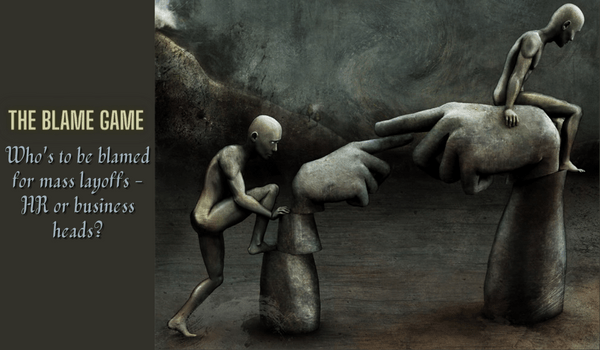The recent mass layoffs across industries that have taken the labour market by storm are a cause of concern. Not only have they added to the uncertainty of the environment, but have raised questions regarding accountability.
The causes behind layoffs are definitely complex and involve multiple factors, including overhiring during the pandemic, uncertain global macroeconomic conditions, cost cutting, restructuring and much more.
In some cases, the HR may have misjudged the size of the workforce needed to meet the company’s goals. This may have led to overhiring and subsequent layoffs.
“The HR can’t really be blamed because they are only doing what the business is asking them to do.”
Amit Sharma, CHRO, Volvo
In other cases, business and function heads may have failed to adjust to changes in the market, such as declining sales or increased competition, leading to downsizing.
Ultimately, both the HR and business / function heads have a role to play in managing the size of the workforce and ensuring that it aligns with the company’s goals.
Who is to blame?
Amit Sharma, CHRO, Volvo, says that nobody can be particularly blamed for this.
“There are two ways in which HR plays a role — strategic and operational. People tend to focus on the operational role of HR in the organisation. However, the HR can’t really be blamed because they are only doing what the business is asking them to do.”
It is the HR’s responsibility to attract, hire and retain talent, whereas business and function heads are responsible for making strategic decisions that impact the company’s bottom line.
Rohit Iyer, director – L&D, PwC, also agrees that the mass layoffs cannot be attributed to the HR. He draws attention to the fact that the HR simply plays a supportive role in implementing the workforce-reduction goals set by the business and functional leaders.
“All organised HR professionals in the organisation should invest enough time to educate the business on talent risks.”
Rohit Iyer, director – L&D, PwC
Organisations that prioritise productivity and utilisation over excessive bench strength are less likely to experience mass layoffs. This is because, these organisations carefully manage their headcount forecast, which is the primary driver for workforce reduction. However, the root cause of layoffs is often incorrect forecasting rather than the HR.
The HR plays a crucial role in providing market statistics and insights into talent trends, such as compensation, as well as supply and demand. However, the HR does not have the authority to make decisions with regard to the specific number of employees to be hired. This decision rests with the business leaders, as it directly affects the profitability of the organisation.
Once the business leaders have signed off on the headcount forecast, HR’s role is to ensure the recruitment of the necessary workforce and manage all HR processes efficiently. The success of this process depends on the factors that drive the business forecast. It is crucial for business leaders to understand these factors and make informed decisions, which then enable the HR to execute the recruitment process smoothly.
Iyer suggests that these layoffs should be a lesson. All organised HR professionals in the organisation should invest enough time to educate the business on talent risks.
It is something that should be done uniformly across all organisations. According to Iyer, “Really good organisations and forward-looking HR practitioners actually spend a lot of time sharing market data, real-time analysis of talent, the war for talent, and supply and demand for certain skill sets.”
Iyer feels that currently there is a slight uncertainty as to whether all department heads or HR departments of all organisations are uniformly doing a good job of providing the right insights to business leaders.
“We should not single out one function; we should say it is management’s calculated risk.”
Rajesh Jain, CHRO, Welspun Enterprises
While it is impossible to predict the future with certainty, human resource departments can take steps to anticipate and prepare for layoffs, minimising their impact on both the employees and the organisation.
Rajesh Jain, CHRO, Welspun Enterprises, explains that the organisation’s assumptions have gone wrong.
“It is important to find out who made those assumptions — HR or the company? In most cases, it is ultimately a management decision, and it is that very decision that went downhill,” asserts Jain.
However, he goes on to add, “We should not single out one function; we should say it is management’s calculated risk. Very few companies authorise the HR to hire whenever or how much ever they want. These decisions are generally based on the company’s budgets.”
The HR is responsible for closely monitoring the financial performance of the company. This includes, keeping an eye on sales figures, market trends and any other indicators that can point to a potential slowdown in business.
If the HR departments are aware of any potential challenges facing their company, they can begin to prepare for a possible reduction in the workforce.
Another important aspect that the HR can focus on is talent management. This includes developing a talent pipeline and maintaining a robust succession plan that ensures that critical skills are not lost in the event of a layoff.
While layoffs are never easy, all leaders, including the HR department, play a critical role in anticipating and preparing for them.






